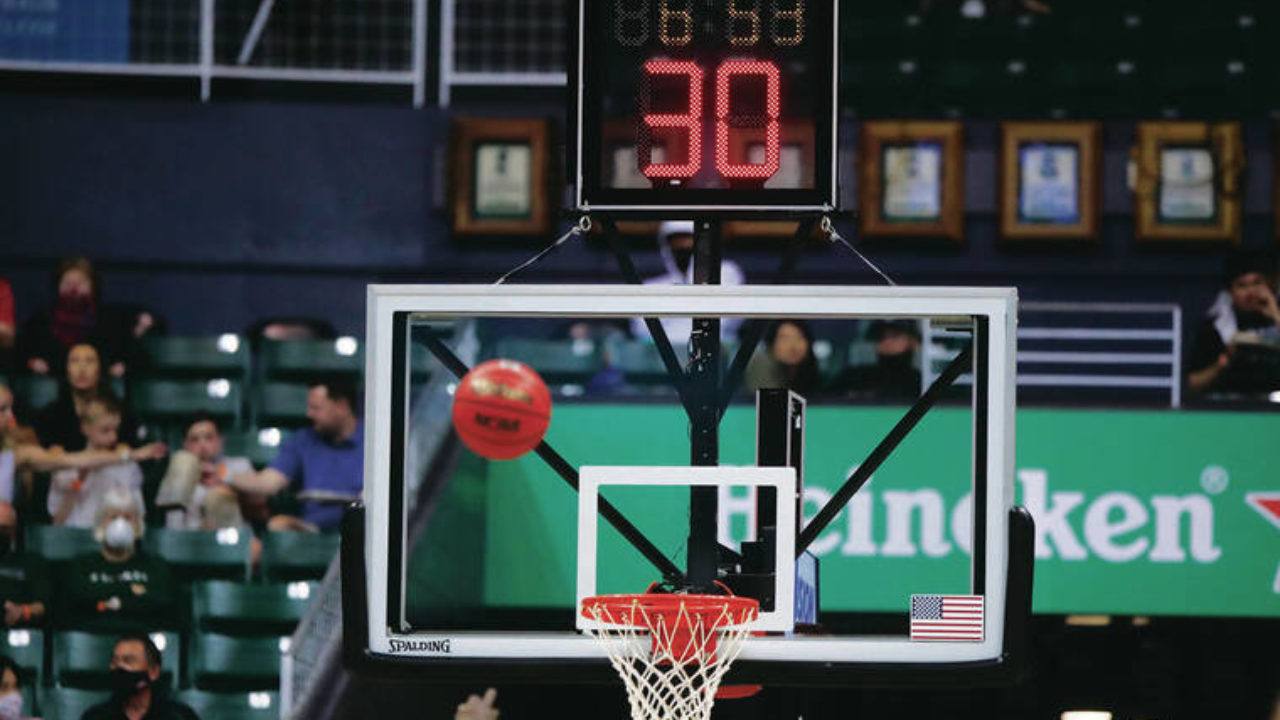
It’s no different for most boys basketball coaches and players in Hawaii.
In Tuesday’s edition of the Honolulu Star-Advertiser, girls basketball coaches chimed in with their thoughts about the shot clock, which has been approved nationally by the NFHS (National Federation of High Schools) for use in the 2022-23 season. Eight states have already implemented the shot clock over the years, including the CIF (California Interscholastic Federation).
A few years back, only three states were using it. The number will continue to grow even though the NFHS has not made it a requirement. Boys coaches in Hawaii chimed in.
>> Robert Shklov, Mid-Pacific: “Shot clock. 100 percent yes. Not only does playing with a shot clock prepare our student athletes for college or professional basketball better, but it’s also a better game for players and spectators alike. I know there are valid fiscal concerns with paying another official and installations to be made, but those are investments that, if possible, are invaluable to the development of basketball in Hawaii.”
>> Chad Townsend, Leilehua: “Yes, please! It speeds up the tempo for the game. I feel it helps kids prepare for the next level if they want to play in college.”
>> Wyatt Tau, Campbell: “Yes. There’s a lot of teams that like to hold the ball early in a game.”
>> Steve Hathaway, Roosevelt: “I think there should be a 30- or 35-second shot clock. It will make the game better where teams can’t just hold it when they are up. You still have to keep playing basketball.”
>> Travis Armstrong, Radford: “Yes. Fast-paced games are fun to watch and fun to coach.”
>> Zach Bailey, Maui Prep: “I’m OK with either or, honestly. Either way, my team will have to learn to be more disciplined offensively and defensively. We would adapt to the situation.”
>> Garrett Gabriel, Mililani: “Yes, I would like a shot clock. The game has changed and that’s what they’ve done across the country.”
>> Larry Park, Kamehameha: “Yes, I would want it. It brings more skill and skill development. Situational game play, end of shot clock sets and defensive strategies.
>> Kihei Kapeliela, Kohala: “I like an uptempo game. A plus for our style because after breaking our press, opposing teams then would have to rush to set up a play or set. It would take stalling out of the game. I hate stalling.”
>> Cody Tesoro, Baldwin: “Yes, definitely. That’s the way basketball at the next levels are played and, ultimately, we should be preparing kids who can play at the next level for it.”
>> Brandyn Akana, Kahuku: “Yes. It levels the playing field. Doesn’t allow teams to sit on the basketball and take time off the clock.”
>> Keith Spencer, Damien: “If our players from Hawaii go to the next level, they will have a shot clock and offensive possessions would be valuable.”
>> Steven Leopoldo, Farrington: “Yes. There’s too much stalling and playing slow-down games. Basketball is an uptempo game.”
Players are clearly for more action.
>> Amari Westmoreland-Vendiola, Kahuku: “Yes, so teams don’t stall and reduce the number of possessions.”
>> Trey Lieb, Mililani: “I believe that a shot clock is needed. I believe it speeds up the game way more and helps us adapt to college play when making it to the next level.”
Kamehameha’s 6-foot-5 senior, EJ Kapihe, spent part of his junior year training on the mainland, playing for a high school team in Ohio with former Maryknoll standout Sage Tolentino. He played regularly with high school and college hoopsters, often playing on the perimeter and developing his skills as a wing.
He is for a shot clock.
“Yes, definitely yes. It’ll prepare kids in Hawaii for the faster paced game that is played everywhere else,” he said. “It’s also better for fans because they wouldn’t have to watch 30- or 40-point games anymore.”
At this point, there is no plan or proposal within the state’s five leagues to adopt a shot clock. With a majority of coaches willing to hand more control and power to players by increasing pace and possessions, the only reasonable obstacle is cost. A “tabletop” shot clock is as low as $500, placed at the scorer’s table or two are placed at opposite ends of the court.
The Compete and Learn (CAL) youth league has separate shot clocks at opposite corners, which are used for all divisions from fourth grade to varsity.
A mounted shot clock, attached to each backboard, ranges from $2,000 to $5,000.
If volunteers aren’t available, a paid shot clock operator could cost the home team in a range of $20-30 per game — junior varsity and varsity.
To Greydon Espinda, who started CAL League in 2010, the added costs are all worthwhile. He sees eight- and nine-year-olds adapt to a quicker, more challenging pace while high school teams sometimes walk the ball up.
“I’m not surprised,” he said of the younger hoopsters. “They caught on so quickly.”
Try ask the local college teams who require shot clocks how much the bill is when one of those shot clocks need repair. Not many athletic departments have that kind of change lying around for one sport.